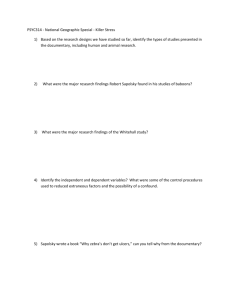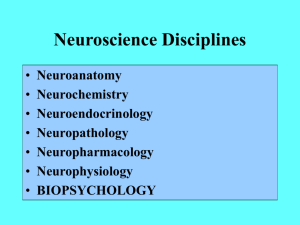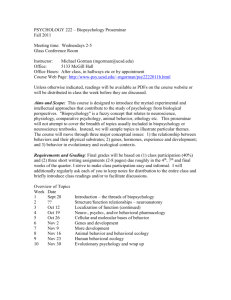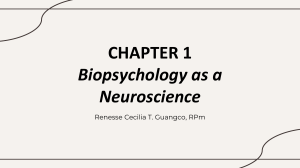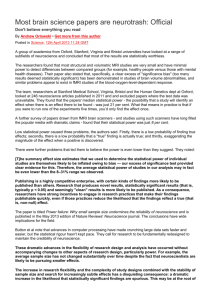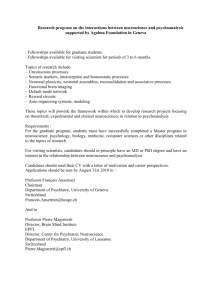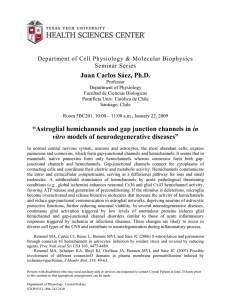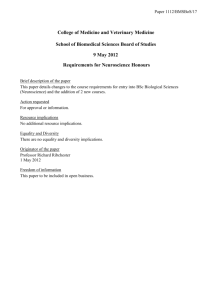Take Home Exam
advertisement
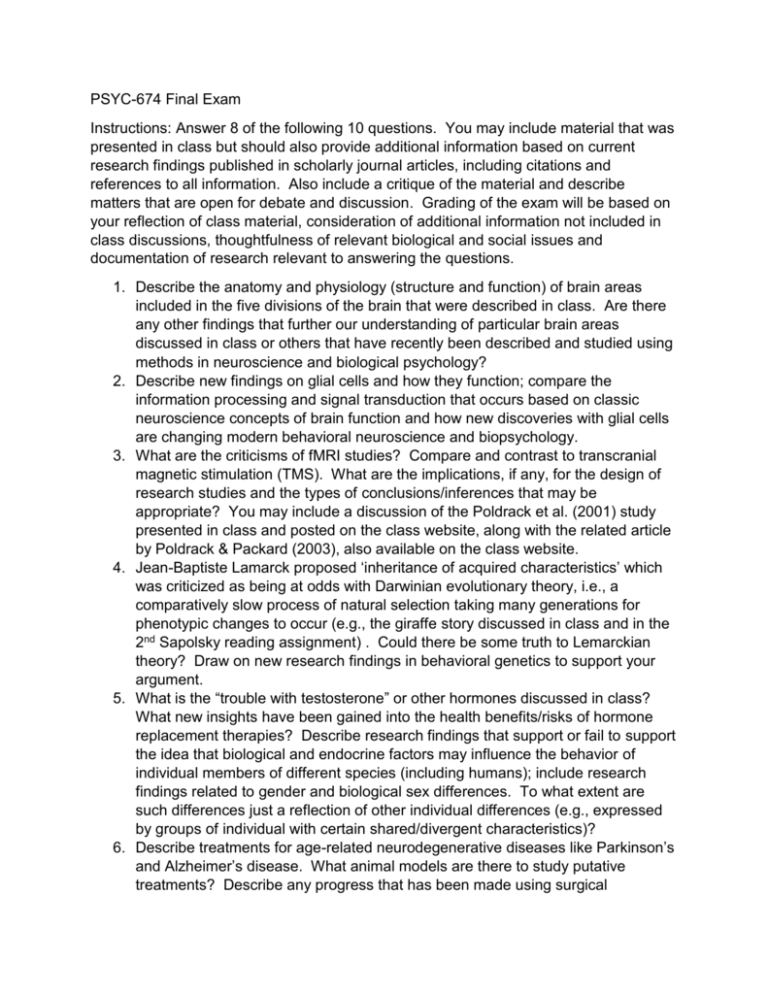
PSYC-674 Final Exam Instructions: Answer 8 of the following 10 questions. You may include material that was presented in class but should also provide additional information based on current research findings published in scholarly journal articles, including citations and references to all information. Also include a critique of the material and describe matters that are open for debate and discussion. Grading of the exam will be based on your reflection of class material, consideration of additional information not included in class discussions, thoughtfulness of relevant biological and social issues and documentation of research relevant to answering the questions. 1. Describe the anatomy and physiology (structure and function) of brain areas included in the five divisions of the brain that were described in class. Are there any other findings that further our understanding of particular brain areas discussed in class or others that have recently been described and studied using methods in neuroscience and biological psychology? 2. Describe new findings on glial cells and how they function; compare the information processing and signal transduction that occurs based on classic neuroscience concepts of brain function and how new discoveries with glial cells are changing modern behavioral neuroscience and biopsychology. 3. What are the criticisms of fMRI studies? Compare and contrast to transcranial magnetic stimulation (TMS). What are the implications, if any, for the design of research studies and the types of conclusions/inferences that may be appropriate? You may include a discussion of the Poldrack et al. (2001) study presented in class and posted on the class website, along with the related article by Poldrack & Packard (2003), also available on the class website. 4. Jean-Baptiste Lamarck proposed ‘inheritance of acquired characteristics’ which was criticized as being at odds with Darwinian evolutionary theory, i.e., a comparatively slow process of natural selection taking many generations for phenotypic changes to occur (e.g., the giraffe story discussed in class and in the 2nd Sapolsky reading assignment) . Could there be some truth to Lemarckian theory? Draw on new research findings in behavioral genetics to support your argument. 5. What is the “trouble with testosterone” or other hormones discussed in class? What new insights have been gained into the health benefits/risks of hormone replacement therapies? Describe research findings that support or fail to support the idea that biological and endocrine factors may influence the behavior of individual members of different species (including humans); include research findings related to gender and biological sex differences. To what extent are such differences just a reflection of other individual differences (e.g., expressed by groups of individual with certain shared/divergent characteristics)? 6. Describe treatments for age-related neurodegenerative diseases like Parkinson’s and Alzheimer’s disease. What animal models are there to study putative treatments? Describe any progress that has been made using surgical interventions, including deep brain stimulation and fetal nerve graft tissue transplantation in addition to drug therapies and preventative or palliative treatments using nutritional supplements or nutraceuticals (e.g, curcumin, procyanidin, resveratrol etc.). 7. What are the implications of the Horizon BBC documentary “the Ghost in your genes” on epigenetics? Are there any relations to neurodegenerative disease or psychological disorders? 8. If Parkinson’s disease does not have a primary genetic component, as suggested by Langston in the PBS NOVA documentary, what evidence is there that other factors may contribute to both MPTP-induced and idiopathic forms of the disease? 9. Provide evidence to support the position that psychological disorders such as OCD, schizophrenia and others, as well as special talents characteristic of savants, may be extreme variations of more moderate tendencies and conditions that can be functional in different cultures/societies. You may draw on material from Robert Sapolsky’s article “circling the blanket for god” but also include other relevant material and discuss the broader implications for biopsychology and other sciences and technologies that may influence how genetic/epigenetic factors interact with the environment. 10. Describe any scientific findings in biological psychology that you believe is relevant to material presented in class. Are there any findings that were not included that you believe are important to consider in the future?
